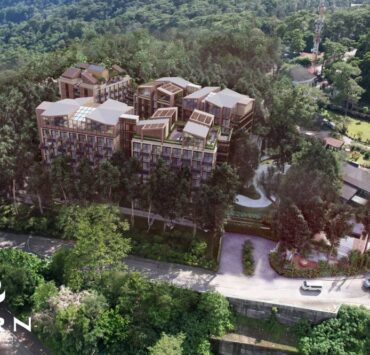Those valuable pockets of green in residential communities

Bringing nature into urban living is about healing and wellness.
Green spaces, lush gardens, and expansive parks bring new life to residential developments. These communities provide a welcome escape from the concrete jungle, encouraging a closer bond between residents and the environment.
Bringing nature into urban living is about healing and wellness. The appeal of residences with generous green spaces has sparked renewed interest, leading to a movement focused on building greener, more connected communities.

Natural elements
From small shrubs to towering trees, plant life offers a host of ecological benefits, from cooling the air to managing rainwater.
The presence of vegetation and natural elements significantly lowers temperatures through evapotranspiration, creating cooler, more comfortable living spaces. In warmer climates, this cooling effect can reduce the need for airconditioning, thereby lowering electricity bills.
Increased property value, desirability
Properties surrounded by trees and gardens do not only offer a serene living environment but also command higher premiums and remain in high demand. Research from reputable real estate consultancy firms validates that properties in proximity to well-maintained parks and green areas experience a steady appreciation in value over time.

With the growing trend of work-from-home arrangements, homebuyers are increasingly prioritizing accessibility to green spaces, making such properties a sound investment.
Individuals want homes where they can relax, breathe cleaner air, and access nature at their doorstep. This preference shift has made expansive, green-oriented developments a sought-after ideal for residential living.
Environmental impact
Residential developments have a lighter environmental footprint when thoughtfully planned with abundant open areas and landscaping as they contribute less to urban heat islands.

Green spaces mitigate this effect by absorbing heat and providing shade, helping cities adapt to climate change.
Planting native trees and creating biodiversity pockets within residential spaces allow local flora and fauna to thrive. This mix strengthens urban ecosystems and helps create a more balanced environment. Birds, pollinators, and small animals become part of the community, improving the ecological health of these residential areas.
Pet-friendly hubs
The trend of pet ownership has also grown significantly, and many people now seek pet-friendly developments. Open spaces, yards, and grassy areas are crucial for keeping pets healthy and happy.
Pets, much like people, need outdoor areas for exercise, play, and mental stimulation. Well-planned green spaces provide pets with ample room to roam, which helps reduce stress and improve their overall well-being.
Green lens
People today seek meaningful experiences that enhance their quality of life and create a sense of connection with their surroundings. They want homes that offer opportunities to engage with nature, build community ties, and enjoy a balanced lifestyle.
Residential developments harmonizing with nature provide this serene and sustainable living environment. They reflect thoughtful planning that values people and nature and show a balanced approach to lifestyle and environmental care.
The author (www.ianfulgar.com), is a leading architect with an impressive portfolio of local and international clients. His team elevates hotels and resorts, condominiums, residences, and commercial and mixed-use township development projects. His innovative, cutting-edge design and business solutions have garnered industry recognition, making him the go-to expert for clients seeking to transform their real estate ventures

















